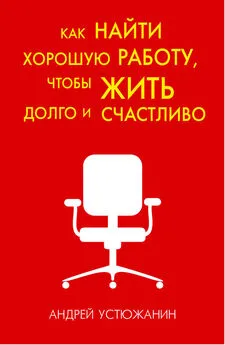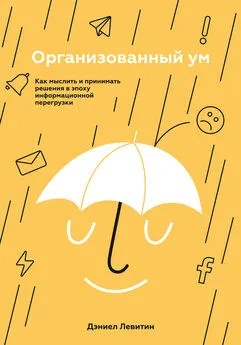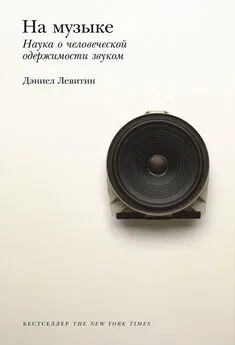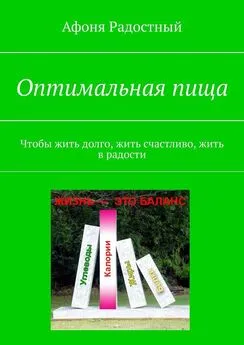Дэниел Левитин - Счастливое старение. Рекомендации нейробиолога о том, как жить долго и хорошо
- Название:Счастливое старение. Рекомендации нейробиолога о том, как жить долго и хорошо
- Автор:
- Жанр:
- Издательство:Манн, Иванов и Фербер
- Год:2021
- Город:Москва
- ISBN:9785001695868
- Рейтинг:
- Избранное:Добавить в избранное
-
Отзывы:
-
Ваша оценка:
Дэниел Левитин - Счастливое старение. Рекомендации нейробиолога о том, как жить долго и хорошо краткое содержание
Ответы на эти и многие другие вопросы вы найдете в книге известного нейробиолога и автора бестселлеров о природе возрастных изменений и о том, как можно прожить долго и что нужно делать сейчас (в любом возрасте), чтобы в 70, 80 и 90 жить полной жизнью.
Книга предназначена для широкого круга читателей.
На русском языке публикуется впервые.
Счастливое старение. Рекомендации нейробиолога о том, как жить долго и хорошо - читать онлайн бесплатно ознакомительный отрывок
Интервал:
Закладка:
730
X. De Jaeger et al., “Decreased Acetylcholine Release Delays the Consolidation of Object Recognition Memory,” Behavioural Brain Research 238 (2013): 62–68; J. Micheau and A. Marighetto, “Acetylcholine and Memory: A Long, Complex and Chaotic but Still Living Relationship,” Behavioural Brain Research 221, no. 2 (2011): 424–429; E. J. Wamsley et al., “Dreaming of a Learning Task Is Associated with Enhanced Sleep-Dependent Memory Consolidation,” Current Biology 20, no. 9 (2010): 850–855.
731
S. Drechsler et al., “With Mouse Age Comes Wisdom: A Review and Suggestions of Relevant Mouse Models for Age-Related Conditions,” Mechanisms of Ageing and Development 160 (2016): 54–68.
732
S. Farajnia et al., “Aging of the Suprachiasmatic Clock,” Neuroscientist 20, no. 1 (2014): 44–55.
733
Drechsler et al., “With Mouse Age Comes Wisdom.”
734
M. A. Lluch, T. Lloret, and P. V. Llorca, “Aging and Sleep, and Vice Versa,” Approaches to Aging Control 16 (2012): 17–21.
735
См., например: A. Naska et al., “Siesta in Healthy Adults and Coronary Mortality in the General Population,” Archives of Internal Medicine 167, no. 3 (2007): 296–301.
736
Walker, Why We Sleep.
737
L. Barateau et al., “Hypersomnolence, Hypersomnia, and Mood Disorders,” Current Psychiatry Reports 19, no. 2 (2017): 13.
738
Barateau et al., “Hypersomnolence.”
739
K. Gleason and W. V. McCall, “Current Concepts in the Diagnosis and Treatment of Sleep Disorders in the Elderly,” Current Psychiatry Reports 17, no. 6 (2015): 45.
740
N. E. Avis et al., “Duration of Menopausal Vasomotor Symptoms over the Menopause Transition,” JAMA Internal Medicine 175, no. 4 (2015): 531–539.
741
M. Bruyneel, “Sleep Disturbances in Menopausal Women: Aetiology and Practical Aspects,” Maturitas 81, no. 3 (2015): 406–409; L. Lampio et al., “Predictors of Sleep Disturbance in Menopausal Transition,” Maturitas 94 (2016): 137–142.
742
D. Cintron et al., “Efficacy of Menopausal Hormone Therapy on Sleep Quality: Systematic Review and Meta-Analysis,” Endocrine 55, no. 3 (2017): 702–711.
743
Из общения по электронной почте с Соней Люпьен 5 декабря 2018 года.
744
Writing Group for the Women’s Health Initiative Investigators, “Risks and Benefits of Estrogen plus Progestin in Healthy Postmenopausal Women: Principal Results from the Women’s Health Initiative Randomized Controlled Trial,” Journal of the American Medical Association 288, no. 3 (2002): 321–333.
745
R. A. Lobo, “Where Are We 10 Years after the Women’s Health Initiative?” Journal of Clinical Endocrinology and Metabolism 98, no. 5 (2013): 1771–1780.
746
A. Vermeulen, “Andropause,” Maturitas 34, no. 1 (2000): 5–15; A. M. Matsumoto, “Andropause: Clinical Implications of the Decline in Serum Testosterone Levels with Aging in Men,” Journals of Gerontology Series A: Biological Sciences and Medical Sciences 57, no. 2 (2002): M76–M99.
747
Vermeulen, “Andropause.”
748
H. B. Carter, S. Piantadosi, and J. T. Isaacs, “Clinical Evidence for and Implications of the Multistep Development of Prostate Cancer,” Journal of Urology 143, no. 4 (1990): 742–746.
749
A. Yang, A. A. Palmer, and H. De Wit, “Genetics of Caffeine Consumption and Responses to Caffeine,” Psychopharmacology 211, no. 3 (2010): 245–257.
750
T. Roehrs and T. Roth, “Caffeine: Sleep and Daytime Sleepiness,” Sleep Medicine Reviews 12, no. 2 (2008): 153–162.
751
E. Murillo-Rodriguez et al., “Anandamide Enhances Extracellular Levels of Adenosine and Induces Sleep: An In Vivo Microdialysis Study,” Sleep 26, no. 8 (2003): 943–947.
752
I. Clark and H. P. Landolt, “Coffee, Caffeine, and Sleep: A Systematic Review of Epidemiological Studies and Randomized Controlled Trials,” Sleep Medicine Reviews 31 (2017): 70–78.
753
L. Shilo et al., “The Effects of Coffee Consumption on Sleep and Melatonin Secretion,” Sleep Medicine 3, no. 3 (2002): 271–273.
754
Roehrs and Roth, “Caffeine.”
755
H. P. Landolt, “Caffeine, the Circadian Clock, and Sleep,” Science 349, no. 6254 (2015): 1289–1289.
756
J. Snel and M. M. Lorist, “Effects of Caffeine on Sleep and Cognition,” in Human Sleep and Cognition Part II: Clinical and Applied Research, Progress in Brain Research, vol. 190, ed. H. P. A. Van Dongen and G. A., Kerkhof, pp. 105–117 (Amsterdam: Elsevier, 2011).
757
T. Jiang et al., “Protective Effects of Melatonin on Retinal Inflammation and Oxidative Stress in Experimental Diabetic Retinopathy,” Oxidative Medicine and Cellular Longevity (2016).
758
F. Yang et al., “Melatonin Protects Bone Marrow Mesenchymal Stem Cells against Iron Overload – Induced Aberrant Differentiation and Senescence,” Journal of Pineal Research 63, no. 3 (2017): e12422.
759
Z. Xin et al., “Melatonin as a Treatment for Gastrointestinal Cancer: A Review,” Journal of Pineal Research 58, no. 4 (2015): 375–387.
760
N. T. de Talamoni et al., “Melatonin, Gastrointestinal Protection, and Oxidative Stress,” in Gastrointestinal Tissue, ed. J. Gracia-Sancho and J. Salvadó, pp. 317–325 (Cambridge, MA: Academic Press, 2017).
761
V. Martinez et al., “Tolerance to Stress Combination in Tomato Plants: New Insights in the Protective Role of Melatonin,” Molecules 23, no. 3 (2018): 535.
762
T. I. Morgenthaler et al., “Practice Parameters for the Clinical Evaluation and Treatment of Circadian Rhythm Sleep Disorders,” Sleep 30, no. 11 (2007): 1445–1459.
763
Hopkins Medicine Staff, “Melatonin for Sleep: Does It Work?” n.d., https://www.hopkinsmedicine.org/health/healthy-sleep/sleep-science/melatonin-for-sleep-does-it-work.
764
G. Chechile, “Melatonin and Cancer,” Approaches to Aging Control 17 (2012): 33–47.
765
Chechile, “Melatonin and Cancer.”
766
M. K. Scullin et al., “The Effects of Bedtime Writing on Difficulty Falling Asleep: A Polysomnographic Study Comparing To-Do Lists and Completed Activity Lists,” Journal of Experimental Psychology: General 147, no. 1 (2018): 139.
767
Не так давно были предприняты попытки оспорить утверждения о том, что самая большая продолжительность жизни составляет 122 года. На мой взгляд, это не меняет понимания продолжительности жизни человека. Есть и другие люди, прожившие почти столько же лет, например 119-летняя Сара Кнаусс. См.: N. Zak, “Evidence That Jeanne Calment Died in 1934– Not 1997,” Rejuvenation Research 22, no. 1 (2019): 3–12; J. Daly, “Was the World’s Oldest Person Ever Actually Her 99-Year-Old Daughter?” Smithsonian, January 2, 2019, https://www.smithsonianmag.com/smart-news/study-questions-age-worlds-oldest-woman-180971153/.
768
G. Quirós, “These Flatworms Can Regrow a Body from a Fragment. How Do They Do It and Could We?” Shots– Health News from NPR, November 6, 2018, https://www.npr.org/sections/health-shots/2018/11/06/663612981/these-flatworms-can-regrow-a-body-from-a-fragment-how-do-they-do-it-and-could-we.
769
A. R. Gehrke et al., “Acoel Genome Reveals the Regulatory Landscape of Whole-Body Regeneration,” Science 363, no. 6432 (2019): eaau6173.
770
T. Shomrat and M. Levin, “An Automated Training Paradigm Reveals Long-Term Memory in Planarians and Its Persistence through Head Regeneration,” Journal of Experimental Biology 216, no. 20 (2013): 3799–3810. Работа Шомрата и Левина основана на более ранней работе: K. Agata and Y. Umesono: “Brain Regeneration from Pluripotent Stem Cells in Planarian,” Philosophical Transactions of the Royal Society B: Biological Sciences 363, no. 1500 (2008): 2071–2078, and others.
771
W. C. Hahn et al., “Inhibition of Telomerase Limits the Growth of Human Cancer Cells,” Nature Medicine 5, no. 10 (1999): 1164.
772
S. J. McInnes and P. J. A. Pugh, “Tardigrade Biogeography,” in Water Bears: The Biology of Tardigrades, ed. R. O. Schill, pp. 115–129 (Cham, Switzerland: Springer, 2018).
773
T. C. Boothby et al., “Tardigrades Use Intrinsically Disordered Proteins to Survive Desiccation,” Molecular Cell 65, no. 6 (2017): 975–984; Boothby made an educational video about the tardigrade: R. Cans, director, “Meet the Tardigrade, the Toughest Animal on Earth,” TEDEd, March 21, 2017, http://ed.ted.com/lessons/meet-the-tardigrade-the-toughest-animal-on-earth-thomas-boothby.
774
X. Dong, B. Milholland, and J. Vijg, “Evidence for a Limit to Human Lifespan,” Nature 538, no. 7624 (2016): 257.
775
Цит. по: R. Mandelbaum, “Scientists Push Back against Controversial Paper Claiming a Limit to Human Lifespans,” Gizmodo, June 28, 2017, https://gizmodo.com/scientists-push-back-against-controversial-paper-claimi-1796483675.
776
Wikipedia, s.v. “Mile Run World Record Progression,” updated July 13, 2019, https://en.wikipedia.org/wiki/Mile_run_world_record_progression#cite_note-iaaf-5.
777
B. G. Hughes, and S. Hekimi, “Many Possible Lifespan Trajectories,” Nature 546, no. 7660 (2017): E8.
778
Цит. по: S. Kirkey, “Forever Young: No Detectable Limit to Human Lifespan, McGill Biologists Say,” The National Post, June 28, 2017, https://nationalpost.com/news/canada/no-detectable-limit-to-human-lifespan.
779
Из личного общения с Джеем Ольшанским 21 марта 2019 года.
780
E. Barbi et al., “The Plateau of HumanMortality: Demography of Longevity Pioneers,” Science 360, no. 6396 (2018): 1459–1461.
781
C. Zimmer, “What Is the Limit of Our Life Span?” The New York Times, July 3, 2018, p. D3.
782
M. P. Rozing, T. B. Kirkwood, and R. G. Westendorp, “Is There Evidence for a Limit to Human Lifespan?” Nature 546, no. 7660 (2017): E11.
783
D. Buettner and S. Skemp, “Blue Zones: Lessons from the World’s Longest Lived,” American Journal of Lifestyle Medicine 10, no. 5 (2016): 318–321 ( Бюттнер Д. Голубые зоны. 9 правил долголетия от людей, которые живут дольше всех.М.: Манн, Иванов и Фербер, 2015); M. Poulain, A. Herm, and G. Pes, “The Blue Zones: Areas of Exceptional Longevity around the World,” Vienna Yearbook of Population Research 11, no. 1 (2013): 87.
Читать дальшеИнтервал:
Закладка:








![Дэниел Левитин - Путеводитель по лжи [Критическое мышление в эпоху постправды]](/books/1101191/deniel-levitin-putevoditel-po-lzhi-kriticheskoe-my.webp)

